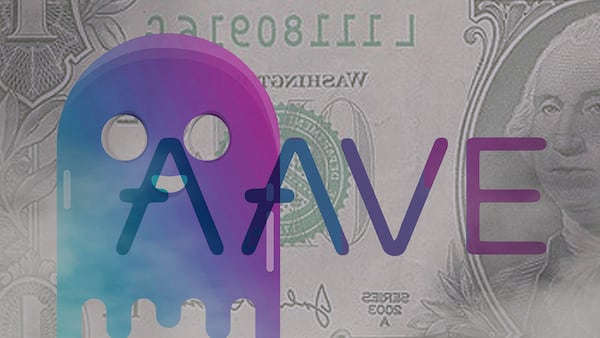- A new Fidelity report says 2024 could be the year institutions dip their toes in DeFi.
- A combination of rate cuts and increased stablecoin yields in DeFi could be enough to make it worth their while.
A new report from Fidelity says institutions could finally make the leap into DeFi in 2024 as yields start to rise.
The report, which covers the asset manager’s 2024 outlook for the crypto industry, focuses on several key areas of development, including Bitcoin mining, stablecoins — and DeFi.
“There may be renewed interest in 2024 if DeFi yields once again become more attractive than TradFi yields and more developed infrastructure emerges,” the report said. TradFi, or traditional finance, refers to finance beyond crypto — big banks, asset managers, hedge funds, and so on.
The prediction comes as the yields DeFi investors can earn by lending out their stablecoins surpasses the yields on US Treasuries.
Fidelity acknowledged that the firm’s 2023 prediction that institutional investors would start meaningfully engaging with DeFi didn’t pan out.
It said that in last year’s “prevailing risk-off environment, institutions deemed the mid-single digit returns offered by DeFi yield to be too low for the associated risk.”
The report added that the Federal Reserve’s decision to increase interest rates in 2023 provided institutions with better, or at least perceived to be safer, options.
Throughout 2023, dollar-pegged stablecoins took a hit as DeFi investors moved into US Treasuries to earn higher yields.
But, if the Fed lowers interest rates by 0.75% by the end of 2024 as forecast, institutions might start looking for more lucrative — but also riskier — ways to make more money, like investing in DeFi.
The Boston-based financial group, which has $4.5 trillion of assets under management, controls some $4.25 billion worth of Bitcoin through its spot ETF.
DeFi yields increase
In DeFi, the yield investors can earn typically increases as the appetite for risk increases.
DeFi lending protocols like Aave, the biggest of its kind with over $8.3 billion of deposits, offer an easy way for investors to leverage their crypto holdings. But to do so, other investors must deposit assets — namely stablecoins — for them to borrow.
In recent months, the yields Aave users can earn by lending out their stablecoins have surpassed the 10-year US Treasuries rate.
The 10-year US rate, commonly referred to as the risk-free rate for dollar investments, currently sits at around 4.3%. In DeFi, investors can earn up to 14% on USDT, the biggest dollar-pegged stablecoin in DeFi with over $97 billion in circulation.
That’s increased from around 5% in August.
Other stablecoins are also commanding higher yields. Dai, the third-biggest stablecoin with around $4.8 billion in circulation, earns Aave depositors around 8.5%, while Circle’s USDC, the second-biggest stablecoin, earns just under 5%.
DeFi investors usually view the lending rates offered on DeFi stablecoins through lending protocols like Aave as the sector’s own risk-free rate. That’s because it represents the baseline return against which all other DeFi positions are evaluated.
The rates offered to lenders on Aave are decided by the protocol’s algorithms. Yields increase in line with how popular an asset is with borrowers.
It’s high yields like these that could tempt institutions into DeFi if and when the yields on US Treasuries fall.
And as long as the appetite for risk continues, the enticing yields that DeFi investors can achieve through lending stablecoins are unlikely to diminish in the near future.
Tim Craig is DL News’ Edinburgh-based DeFi Correspondent. Reach out with tips at tim@dlnews.com.




